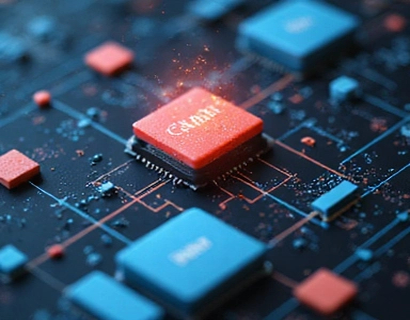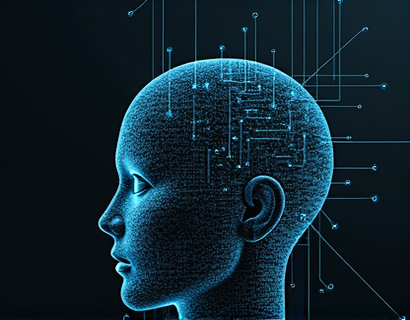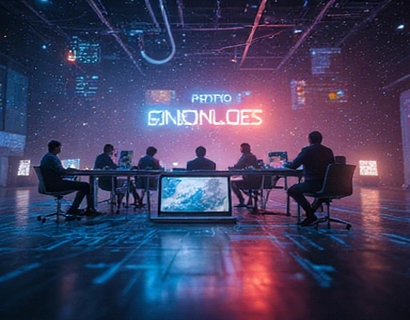AI-Powered Cosmic Learning: Interactive Exploration with Customizable Settings for Educators and Space Enthusiasts
In the realm of education and space exploration, the integration of artificial intelligence (AI) has opened new avenues for interactive and personalized learning experiences. This article delves into the concept of an AI-powered learning tool designed to make space and astronomy accessible, engaging, and customizable for both educators and space enthusiasts. By leveraging advanced AI technologies, this tool offers a unique platform for exploring the vast and intricate universe, tailored to individual interests and learning styles.
The core functionality of this AI-powered learning tool revolves around interactive explorations of celestial phenomena and astronomical concepts. Users can embark on a personalized cosmic journey, guided by an intelligent system that adapts to their knowledge level, preferences, and learning pace. This adaptive learning environment ensures that whether a user is a beginner or an advanced space enthusiast, they receive content that is both challenging and informative.
Customizable Learning Settings
One of the standout features of this AI-powered tool is its customizable settings. Users can adjust various parameters to tailor their learning experience. These settings include the depth of information, the type of content, and the pace of the exploration. For instance, a user can choose to focus on specific areas of astronomy, such as planetary science, astrophysics, or space exploration history. This flexibility allows educators to create customized lesson plans that align with their curriculum goals, while space enthusiasts can dive deep into topics that fascinate them the most.
The customization extends to the presentation of information as well. Users can select their preferred format, whether it's text, images, videos, or interactive simulations. This multi-modal approach caters to different learning preferences and enhances the overall educational value. For example, visual learners can benefit from high-quality images and videos of celestial bodies, while kinesthetic learners can engage with interactive simulations that model astronomical events.
Interactive Explorations
Interactive explorations are at the heart of this AI-powered learning tool. Users can embark on virtual tours of the solar system, explore distant galaxies, and even simulate space missions. These interactive experiences are designed to be immersive and engaging, providing a hands-on approach to learning about the universe. The AI system dynamically adjusts the complexity and detail of these explorations based on the user's interactions and feedback.
For educators, these interactive explorations can serve as a powerful supplement to traditional teaching methods. They can use the tool to create virtual field trips, where students can explore the Moon's surface or the rings of Saturn without leaving the classroom. The AI system can also provide real-time answers to students' questions, ensuring that the learning experience is both informative and responsive.
Personalized Learning Paths
The AI-powered learning tool goes beyond static content by creating personalized learning paths for each user. By analyzing user interactions and performance, the AI system identifies areas of strength and weakness, and curates content accordingly. This personalized approach ensures that users are continually challenged and engaged, preventing boredom and fostering a deeper understanding of complex topics.
For educators, this feature is particularly valuable as it allows them to track the progress of their students and identify areas where additional support may be needed. The AI system can generate detailed reports and recommendations, helping educators to tailor their instruction and provide targeted assistance. This data-driven approach enhances the overall effectiveness of the learning process.
Enhanced Engagement through Gamification
To further enhance engagement, the AI-powered learning tool incorporates elements of gamification. Users can earn points, badges, and achievements as they complete modules and achieve milestones in their cosmic journey. This gamified approach not only makes learning more enjoyable but also motivates users to continue exploring and learning about the universe.
For space enthusiasts, the gamification elements can transform the learning experience into a rewarding adventure. Challenges and quizzes can test knowledge and critical thinking skills, while leaderboards can foster a sense of competition and community among users. Educators can also use these gamified elements to create engaging assignments and projects that encourage active participation and collaboration among students.
Accessibility and Inclusivity
Accessibility is a key consideration in the design of this AI-powered learning tool. The platform is designed to be inclusive, catering to users with diverse abilities and backgrounds. Features such as text-to-speech, adjustable text sizes, and high-contrast modes ensure that the content is accessible to a wide range of users, including those with visual or hearing impairments. This commitment to inclusivity ensures that everyone has the opportunity to explore and learn about the universe.
For educators, this means they can include students with different needs in their classes without worrying about the limitations of traditional educational materials. The AI system can adapt to individual requirements, providing an equitable learning experience for all students. This inclusivity not only enriches the learning environment but also promotes a more diverse and vibrant community of space enthusiasts.
Real-Time Updates and Current Events
The AI-powered learning tool stays up-to-date with the latest developments in space exploration and astronomy. Users can receive real-time updates on new discoveries, missions, and events in the cosmos. This feature ensures that the content remains current and relevant, keeping users informed about the latest advancements in the field.
For educators, real-time updates provide an excellent opportunity to incorporate current events into their lessons, making the subject matter more dynamic and engaging. Students can learn about recent breakthroughs, such as the discovery of exoplanets or the launch of new space missions, and discuss their implications in the classroom. This connection to real-world events helps to contextualize the theoretical concepts and inspires a deeper interest in the subject.
Collaborative Learning Features
Collaboration is a crucial aspect of effective learning, and the AI-powered learning tool supports this through various collaborative features. Users can join discussion forums, participate in group projects, and engage in live sessions with peers and experts. The AI system facilitates these interactions by providing structured frameworks and guiding questions to ensure productive and meaningful discussions.
For educators, these collaborative features can enhance the classroom experience by fostering a sense of community and encouraging peer-to-peer learning. Students can work together on projects, share insights, and learn from each other's perspectives. The AI system can also monitor these interactions, offering feedback and suggestions to improve collaboration and learning outcomes.
Integration with Existing Educational Platforms
To seamlessly integrate into existing educational ecosystems, the AI-powered learning tool is designed to be compatible with a wide range of platforms and systems. It can be easily incorporated into learning management systems (LMS), educational websites, and other digital learning environments. This flexibility ensures that educators can adopt the tool without disrupting their current workflows or requiring significant technical adjustments.
For institutions and educators, this compatibility means they can leverage the tool's advanced features while maintaining the structure and resources they already use. The AI system can access and complement existing databases, resources, and tools, creating a cohesive and comprehensive learning experience. This integration also allows for the sharing of content and progress across different platforms, enhancing the overall educational journey.
Continuous Improvement and User Feedback
The AI-powered learning tool is committed to continuous improvement, driven by user feedback and data analytics. The system collects and analyzes user interactions, feedback, and performance data to identify areas for enhancement and innovation. This data-driven approach ensures that the tool remains relevant, effective, and aligned with the evolving needs of educators and space enthusiasts.
Educators can provide feedback on the tool's performance and suggest improvements, contributing to its ongoing development. This collaborative approach not only enhances the tool's functionality but also fosters a sense of ownership and engagement among users. By actively involving the user community in the improvement process, the tool can better meet the diverse needs of its audience.
Conclusion
In conclusion, the AI-powered learning tool represents a significant advancement in the field of space education and exploration. By offering interactive, customizable, and engaging experiences, it breaks down barriers and makes the universe accessible to a wide range of learners. Whether used by educators to enhance their teaching or by space enthusiasts to satisfy their curiosity, this tool provides a valuable resource for exploring the vast and fascinating cosmos. As technology continues to evolve, the potential for AI-driven educational tools like this one to transform learning and inspire a new generation of space explorers is immense.










































